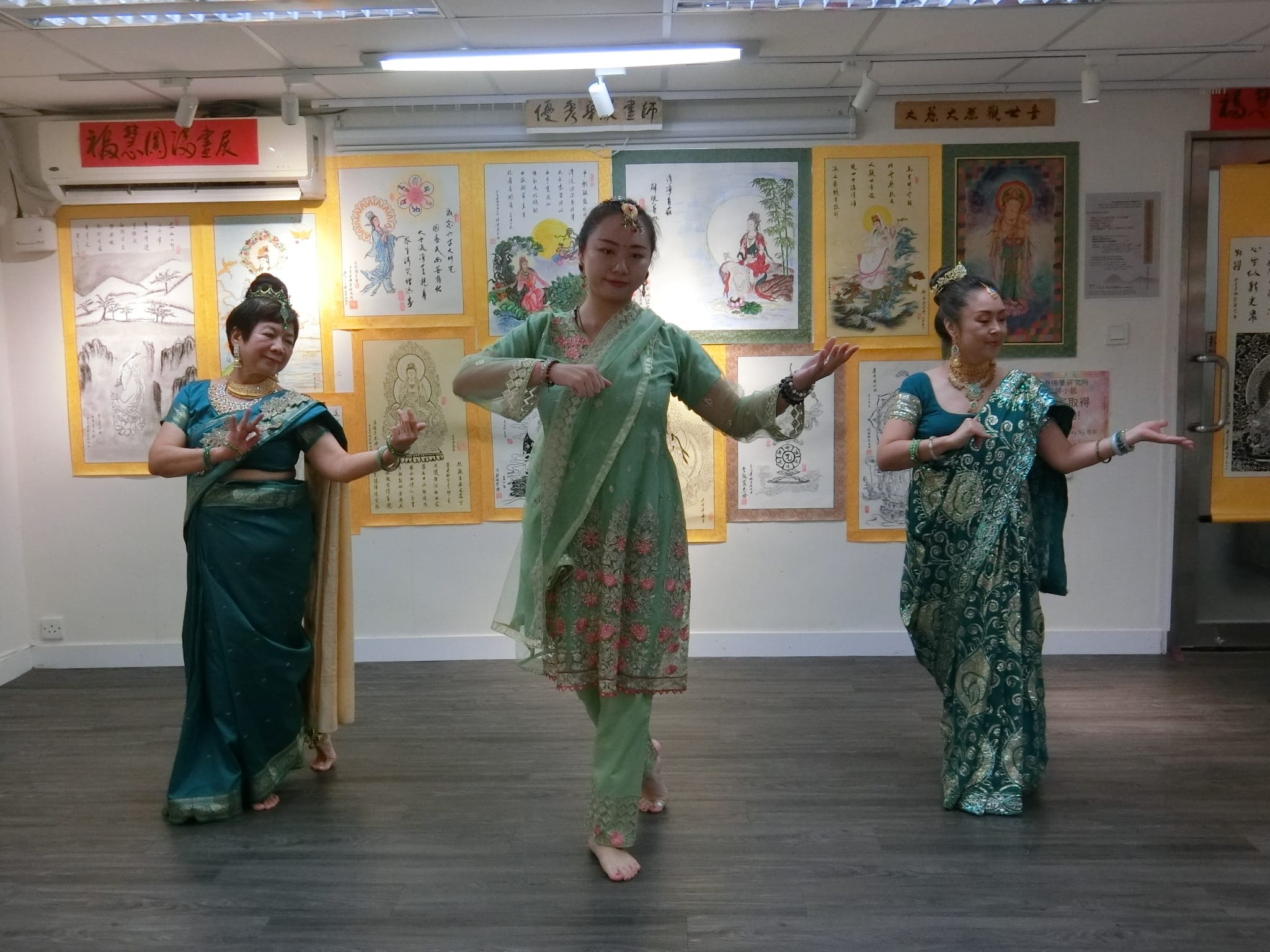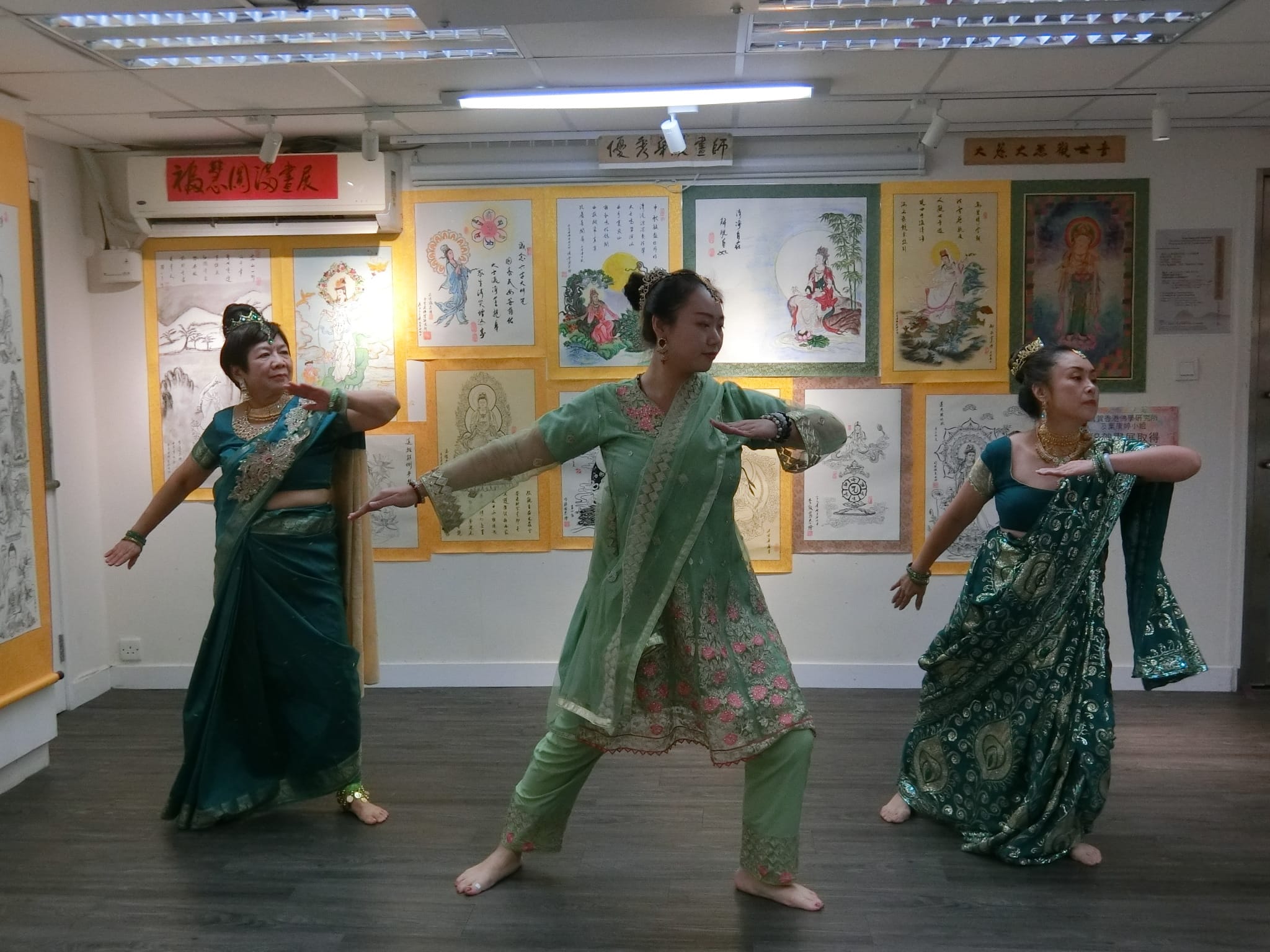Tina Ho’s Hong Kong Buddhist Studies Association (HKBSA) is a unique expression of localized Buddhist art and dance with an overseas origin. For years she has been practicing Vajrayana Buddhism, and her connection to Nepali – specifically, Newari – Vajrayana has led her to spreading awareness about it from her HKBSA base, while also expanding her art and dance repertoire to include deities and themes that are uniquely Chinese and local to Hong Kong. While certain music and movements may be different, “all bodhisattvas are the same,” as she tells me.
Tina is a student of Charya Nritya master Prajwal Vajracharya, whose tutelage has brought her much inspiration, comfort, and insight over the years. In 2019, Tina established her center to bring Charya Nritya to local Hongkongers – this eventually led to Prajwal encouraging Tina to teach a separate form of “Mudra Zen dance,” with Prajwal’s Newari lineage as a base. Therefore, while all of Prajwal’s students (like my friend LiAnne Hunt) interpret his teachings faithfully, Tina takes into account how bodhisattvas whose reverence is emphasized in Chinese Mahayana, such as Samantabhadra and Kshitigarbha, can play an active role in the artistic and dance lives of her own pupils.

I spoke to Tina’s students: Shira, Patty, Mary, and Sin Ying. All of them found the HKBSA through social media, specifically, Facebook. Sin Ying, being a young rising star at the school, had been searching for Sanskrit classes when she became enamored of Tina’s dances. “In signing up for the Mudra Zen dances, I think I initially wanted to challenge myself, but came to increasingly feel empowered. In dancing for deities, I could feel their power in me. I became acquainted with them, I introduced them to viewers watching my dancing, and I came to know their presence in myself.”
Shiren is another student who got immersed in Mudra Zen at a critical period in her life. She used to be Christian, but she had always admired Buddhism and had initially sought opportunities to paint Buddha images. “I was struck by the Newar music and eventually found it more to my liking as a vehicle for expressing my creative impulses,” she reflects. “Indeed, it is dance that helps me understand the Dharma better.” Through the dance, one empties themselves of past and future, embodying only the present. It also has had the effect of bringing her calm and joy during the COVID-19 pandemic, and helped her cultivate a positive attitude when her business was in a difficult economic situation. “Every time we perform together as a group, it’s a great success, even if individually we might make mistakes or feel nervous.”

Patty and Mary also came into contact with HKBSA through Facebook, which seems to highlight how Buddhists groups are also reaching out to new audiences and students. They also feel that group dancing is one of the highlights of their learning, where their sense of peace in performing grows stronger and is multiplied. “We cannot control our external conditions and events,” she says, “but I’ve learned that we can control our reactions. I was already a Buddhist by the time I initially got into Tina’s activities through painting. But encountering the mantras was transformative, and I appreciated how the dance movements incorporate both positive and negative feelings.” Mary, for her part, has felt welcome and included ever since joining, and enjoys the embodied aspect of the dance.
The integration of the human condition, mudras, expressions, deity yoga, and symbolism into set performances makes Mudra Zen dance “one for the bodhisattvas.” The women (and men) that join Tina’s classes appreciate “performance as practice,” and this culture has consolidated itself among a small circle in Hong Kong while also being shared with Prajwal in Nepal. This has led to a budding cultural exchange between Nepal and Hong Kong, in which Nepalese Buddhists and Newar leaders can observe the localization of their heritage and traditions in a Chinese context. In this sense, Tina’s center and efforts represent a unique straddling of importing and localizing, adaptation and fidelity. How her initiative will progress in the future deserves observing.


